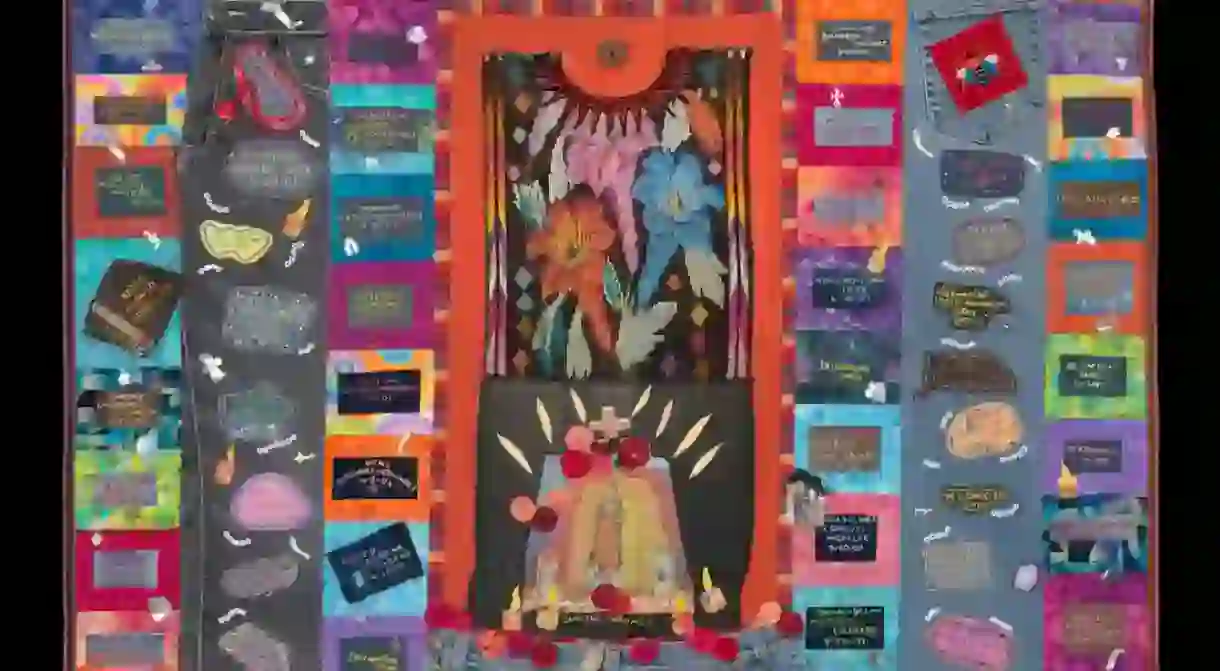This Quilting Project Memorialises Migrant Deaths on the US-Mexico Border

The Migrant Quilt Project is a moving arts and social justice project started by an Arizona native that’s redefining how migrants, primarily from Mexico, Guatemala, El Salvador and Honduras, are being memorialised after dying in their attempts to cross the US-Mexico border.
Each year, thousands of migrants make the treacherous journey across Mexico to reach the US, but not all of them live to tell their tale. In fact, in the Tucson Sector of the Southern Arizona stretch along the Sonoran Desert, the section on which the Migrant Quilt Project focuses its attention, an average of 200 migrants die each year.
Launched by Tucson native Jody Ipsen, the inspiration for the project came over ten years ago when she stumbled across a so-called ‘layup’ site, a spot in the desert where immigrants would rest, refuel and sometimes change their clothes. These layup spots also happen to be where collections of personal belongings, discarded en route, piled up alongside trash and empty water bottles. After working with other humanitarians to clean up the trails and throwing out what had been collected, Ipsen decided that the clothing remains could be utilised for something much bigger—memorial quilts.

Though Ipsen had participated in activism, she found herself in unchartered territory when she started quilting and so, she looked to volunteers from across the US who took the reins on actually crafting the quilts. Each quilt is as individual and arresting as the last: everything from squares of graphic t-shirts to checked shirts, handkerchiefs and patches of jeans are used to sew the large quilts. However, the names and ages (alongside plenty of desconocidos, or unidentified people) embroidered into each one are the starkest reminder that the Migrant Quilt Project is far more than just a folk art project. Each name, or desconocido, honours one of the migrants who passed away while crossing the border during a particular year. (It should be noted that none of the quilts utilise clothing found in areas where deceased migrants were recovered. Instead, the project uses only discarded textiles and is sure to hand over anything with identifiable information to the police.)

Memorialising the deceased isn’t the sole purpose of the project. Rather, its aim is to also draw attention to why these deaths have occurred, why these migrants were driven to cross a dangerous desert and the ways in which these tragedies could have been prevented. The end goal is to incite a change in the, quite literally, deadly border policies. The Migrant Quilt Project has certainly created a prominent voice in the discussions surrounding border policies, which often seem to be mere abstract concerns for lawmakers.














